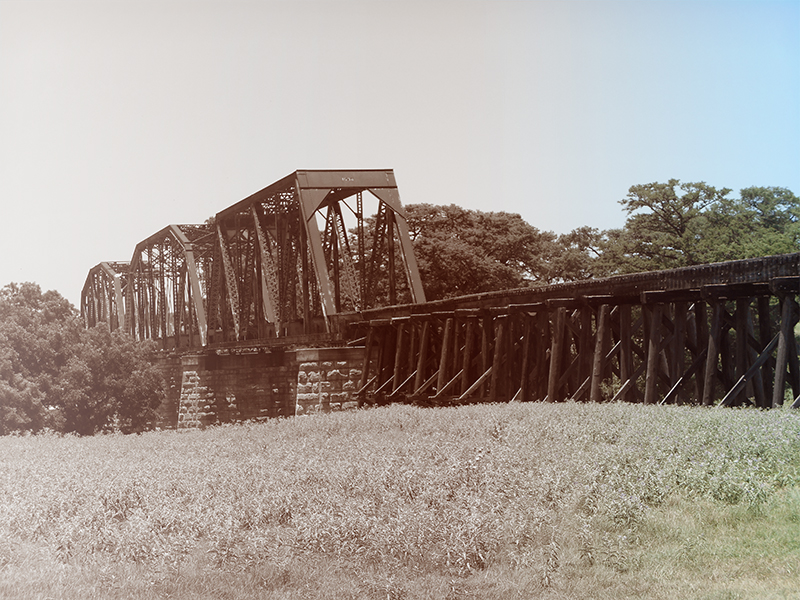Not even the rain that washed out the free barbecue lunch could curb the unbridled enthusiasm of the crowd huddled behind the old Gillespie County fairgrounds that November day in 1913. The women, dressed for the occasion, wore shawls and Sunday bonnets. Many of the men wore suits and ties with topcoats against the cold and rain – their railroad tickets proudly stuck in their hatbands. For over an hour adults scanned the hills to the southeast. Children, not knowing what to expect but giddy with excitement, put their ears to the rails.
Then they heard it — a high lonesome whistle accompanied by a trail of black smoke against the gray wintry sky. Several minutes later the locomotive rolled into Fredericksburg, covered in grease and soot, squeaking like a cheap fiddle and spewing vapor like a leaky steam pipe.
That glorious arrival touched off a massive 3-day celebration called the Eisenbahnfest (the Great Railroad Festival). Temple D. Smith, Fredericksburg banker and the driving force behind the Fredericksburg and Northern Railroad, picked up a maul and pounded in the symbolic last spike. Texas Governor Oscar Colquitt made a speech. There was music, dancing, food, beer, and a parade.
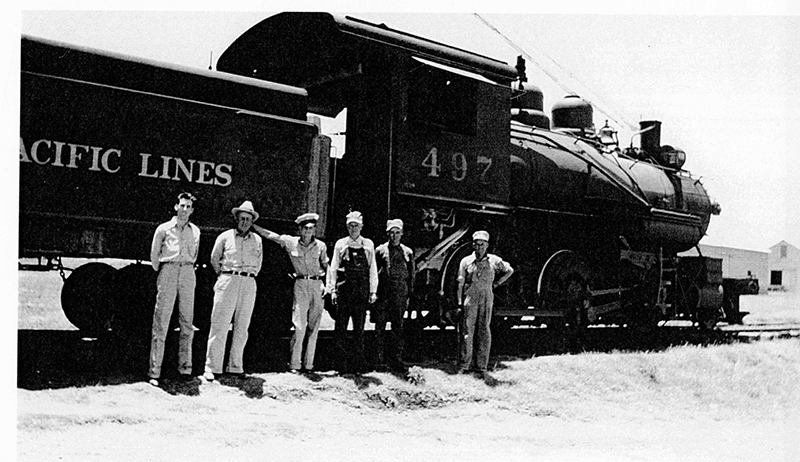
No one in the crowd that afternoon doubted that the arrival of the railroad was the biggest event in the history of Fredericksburg since Meusebach’s treaty with the Comanche. The town had waited on this day for years. There was a strong belief in the early 20th century that a town without a railroad couldn’t survive. It certainly couldn’t prosper. On the other hand, many people were just as certain that a railroad guaranteed prosperity. Kerrville had a railroad. Llano had a railroad. Even Comfort had a railroad. Well Fredericksburg was not about to be left high and dry — not if Temple Doswell Smith had anything to say about it. In the 1880s, Smith and a group of local businessmen began a campaign to lay track from a junction on the San Antonio and Aransas Pass Railroad, 4 miles east of Comfort, to Fredericksburg — a distance of 24 miles.
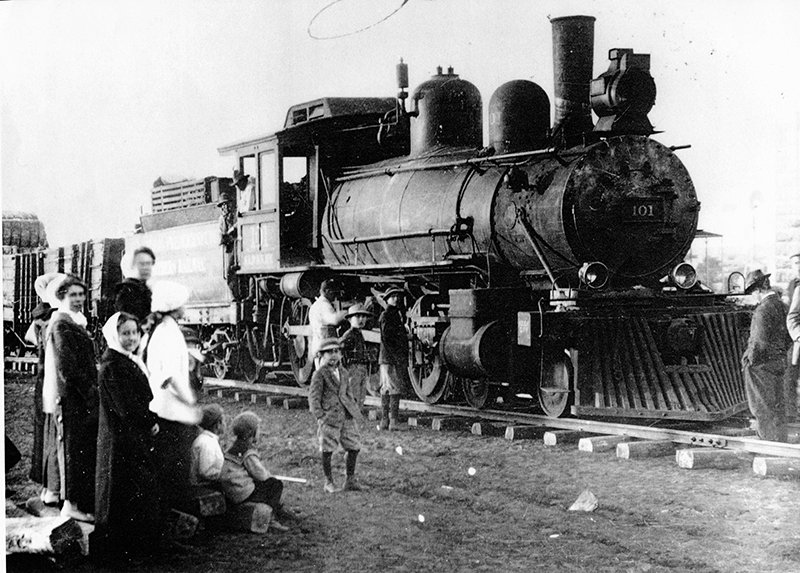
For the next 30 years the committee considered at least 30 deals from 20 different promoters, but in the end the problems were always the same. The hills around Fredericksburg were too high and the grade was too steep. At least one plan proposed a longer route with easier grades that took the tracks close to Kerrville, but Kerr County residents, who already had a railroad and saw no good reason why Fredericksburg should have one, squashed that idea.
Then in 1911, Temple Smith met a cagey Kansas City shoe salesman named R.A. Love. Mr. Love dreamed big and talked fast. He made people believe he could move mountains. He organized a group of San Antonio investors and made his pitch to the Fredericksburg Railroad committee. In a few days the deal was struck. Everyone agreed the job wouldn’t be easy, especially when the rails reached the “big hill” — a high limestone ridge that separated the Pedernales Valley from the Guadalupe River watershed. The tracks couldn’t go over it or around it. They had to go through it.
In the spring of 1913 workers for the Foster Crane Company began chipping a 900 ft. long tunnel through the big hill using picks, shovels, scrapers, and 8 car loads of blasting powder. Two crews attacked the hill — one from each side. Casual observers, even the railroad workers, had doubts that the bores, coming from opposite directions, would line up, but the skeptics were wrong. The shafts aligned almost perfectly.
The tunnel was an engineering marvel, but it was costly. To pay for it the railroad had to raise, and promise to repay, $134,000 plus interest, a staggering amount of debt for a short-line railroad. That messy predicament, however, was too far ahead to see. In the excitement of the Great Railroad Festival, financial concerns were easy to put aside. Paying the tab got lost in the hoopla.
When the festival was over and the crowd went home, the Fredericksburg and Northern Railroad got down to business. The train left Fredericksburg every morning at 7:15 for the two-hour run to the junction, with stops at Cain City, Bankersmith and Mount Alamo. At the junction, passengers and freight cars connected with the San Antonio and Aransas Pass train from Kerrville. That train arrived at the San Antonio station just before noon. Passengers and freight traveling in the other direction left San Antonio at 2 p.m. and arrived in Fredericksburg at around 8 that evening.
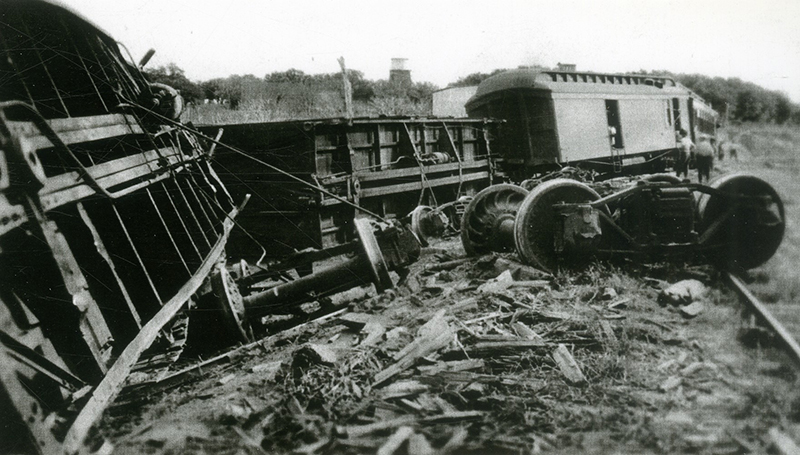
But train schedules were exercises in wishful thinking. Delays were common. Rockslides had to be cleared. Curious herds of cattle and goats had to be driven from the tracks. Flash floods washed out bridges. The roadbed settled causing derailments. This train had trouble staying on the tracks. Even when the train could have run on time, the schedule wasn’t always taken seriously. The train stopped not only at designated places but anywhere along the line a passenger wanted to get off. There were stories of trains stopping so the crew could chop wood for the boiler, shoot a deer or let hens and their chicks cross the track.
In January 1920, the Fredericksburg Chamber of Commerce, frustrated with the train’s history of unreliable service, voted to void the railroad’s mail contract and establish a daily mail route by automobile between Fredericksburg and Comfort. The businessmen did not want to take the mail contract from the financially-strapped railroad, but they had no choice.
While interruptions and operational delays were troublesome, the worst possible development for the railroad was a subtle but monumental shift in the business of moving passengers and freight. In the 1920s and ’30s, improved roads, better vehicles and cheap gasoline caused an increase in auto, bus and truck traffic between Fredericksburg and San Antonio and a corresponding decrease in the railroad’s passenger and freight business. Passenger service declined so much that the railroad dropped the often empty coach from the daily mixed train. Reduced business caused revenues to fall below projected levels. Most years the company was lucky if it could pay operating costs and debt service. Retiring its massive liability was a fantasy.
Then in 1929, Southern Pacific threw stockholders a lifeline by offering to buy the Fredericksburg and Northern Railroad for its appraised value to $227,000. In a decision they would soon regret, the stockholders held out for $335,000. Southern Pacific walked away.
After three more years of red ink, the Fredericksburg and Northern Railroad offered itself to Southern Pacific at a steep discount. This time Southern Pacific never bothered to respond.
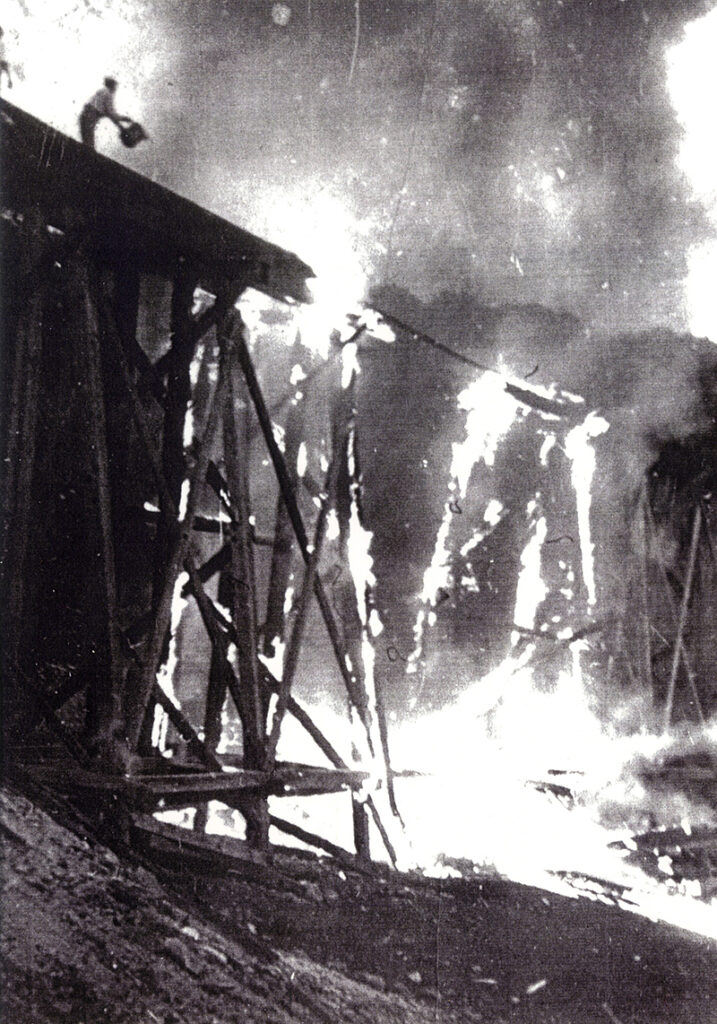
The Fredericksburg railroad was a big dream to give up on, but by the start of WWII the handwriting was on the wall. Losses were unsustainable. As reality set in, stockholders sold out, some for pennies on the dollar.
In 1942, the primary remaining stockholder, Dr. O. H. Judkins of San Antonio, desperate to cut his losses, got permission to abandon the line and sell it for scrap. A Chicago company bought the rails, ties, bridge timbers, land and buildings for $77,000. Most of the rails went to the War Production Board to build spurs to new army camps across the country. Six carloads of rails went to Australia. Wooden railroad ties in good condition went on the market for a dollar each. Timbers became parts of bridges and trestles in other states. In a few months almost every tangible scrap of the railroad that could be pried loose or dismantled had vanished.
As years passed the land returned to normal use, but the railroad left a mark that never completely disappeared. Even today it reveals itself whenever a motorist spots an unnatural earthen bank across a pasture or when a rancher kicks the dirt with the toe of his boot and uncovers a rusty railroad spike. Like a phantom, the railroad is an illusion without a physical presence.
The tunnel is still there. So is the old Fredericksburg depot, hiding in plain sight behind H-E-B. Some of the grading is still visible along the Old San Antonio Road, and at least three communities — Cain City, Bankersmith and Mount Alamo — owe their existence to the railroad.
Cain City began as the dream of an ambitious Kansas businessman and promoter named Joseph Stinson who heard about a railroad being built from Comfort to Fredericksburg. In 1913, he traveled the proposed route looking for a place to build his dream city. He found it in the hills six miles south of Fredericksburg. As a fundraiser, the railroad promised to name a community along the new rails after the person who raised the most money for the project. The winner was Charley Cain, manager of the Peden Iron and Steel Works of San Antonio. Joseph Stinson’s dream town became Cain City.
Bankersmith was a whistle stop named for Temple Doswell Smith, Fredericksburg banker and the man who did more than anyone to bring the railroad to Fredericksburg.
Developers designed Mount Alamo, on top of the big hill, to be a model city and a grand mountain resort. When completed it would rival the famous vacation spots in the Adirondacks. Advertisements compared Mount Alamo to Saratoga Springs, New York. But dreaming is easy. Making dreams come true is hard, dirty work. At Mount Alamo the work never happened.
All three towns declined after the railroad left. They were lofty dreams that never came true, but they are still there and probably always will be.
Although the Fredericksburg railroad was a business failure, it was a textbook case in the power of a united community to perform great feats against impossible odds. That power is our inheritance. The railroad may be gone, but the spirit it took to build it never left.
To learn more check out Rails Through The Hill Country: The Story of the Fredericksburg and Northern Railroad, by F. A. Schmidt.
Fredericksburg, Comfort and a Railroad, by Carol A. King.


